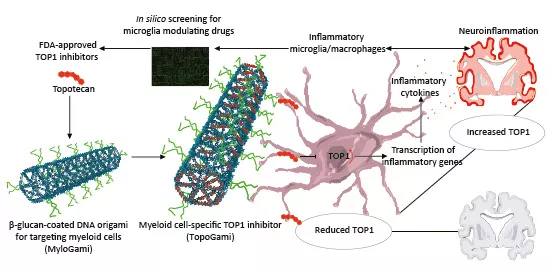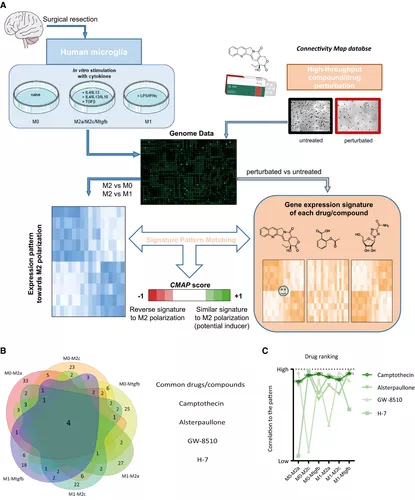According to new atlas, many studies have been looking for the root causes of neurodegenerative diseases such as multiple sclerosis (MS), but the core of most research work is an immune cell called microglia. The dysfunction of these key "gears" in the central nervous system has prompted people to widely look for drugs that can change their activities. But a new study shows that we may already have a drug : an existing drug has produced significant therapeutic effects on experimental models of multiple sclerosis**

Microglia are the key to the ability of the human body to clear harmful factors (such as pathogens or cancer cells), and find themselves at the core of many research efforts aimed at curbing chronic neurodegenerative diseases. This is because more and more evidence links the infection of the central nervous system with diseases from Alzheimer's disease to Parkinson's disease and multiple sclerosis. Research continues to prove that understanding the behavior of microglia can lead to the next generation treatment of such diseases.
This includes how microglia lacking key proteins drive Alzheimer's disease and multiple sclerosis, how microglia heal damaged neurons to prevent the onset of Parkinson's disease, and how the role of microglia in disease may be mediated by our intestinal bacteria. The potential for new therapies to regulate microglia activity is enormous, but scientists at the Karolinska Institute in Sweden use modern screening methods to ensure that existing drug candidates are not ignored.

The first author, keying Zhu, said: "data mining on open databases is a time-saving and economical method, and now there is so much data available. We were lucky to find four compounds with the desired properties, one of which proved very promising for our further investigation, and finally showed significant therapeutic effects in our experimental model of multiple sclerosis."
The compound is an inhibitor of topoisomerase 1 (Top1) gene, and its analog topotecan (TPT) is a drug approved by FDA for the treatment of small cell lung cancer. The team first showed that Top1 was highly expressed in inflammatory tissues of patients with multiple sclerosis and mouse models. Then, scientists carefully designed a new drug delivery system, which is composed of mylogami coated with natural polysaccharides and can load TPT (topogami) to specifically target microglia. This system has been proved in vitro culture and in vivo experiment of multiple sclerosis mouse model. It can significantly inhibit the inflammatory response of microglia and alleviate the progress of the disease.

"The biotechnology industry has realized the potential of microglia targeting strategy, and at least 20 new companies have started to operate in recent years," said Professor Bob Harris, the author of the research report. "Compared with the new drug R & D project, it may take 20 years before the new drug is approved, and the use of existing prescription drugs can halve this time."
This study was published in the embo report 》In magazines.